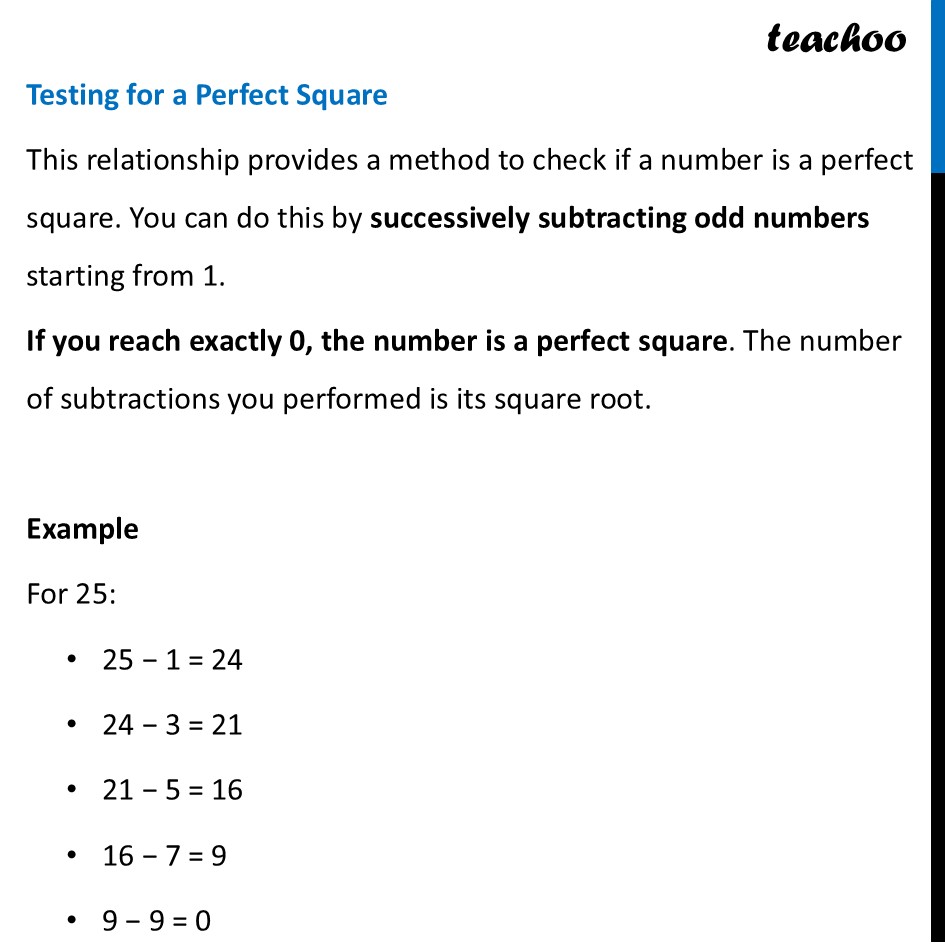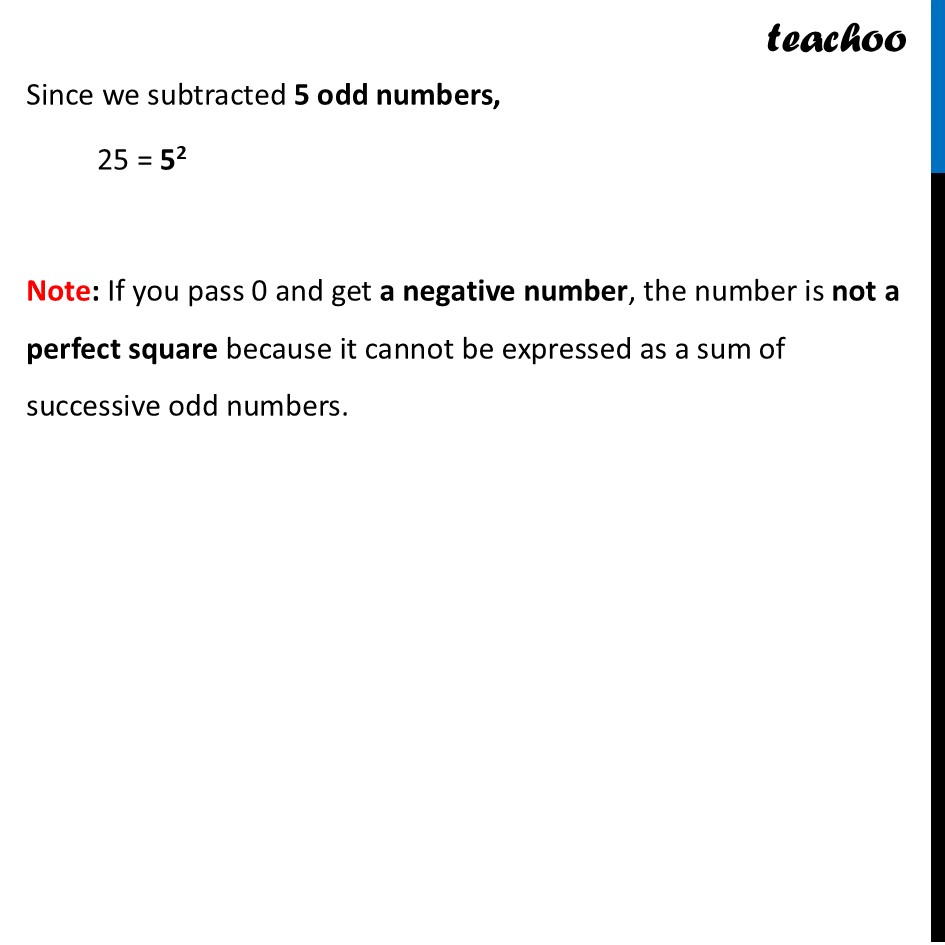



Perfect Squares - and its Patterns
Last updated at July 29, 2025 by Teachoo




Transcript
Perfect Squares and Odd Numbers There is a fundamental pattern connecting perfect squares and odd numbers: Every perfect square is the sum of consecutive odd numbers starting from 1. Thus, ∴ Sum of n Odd Number = 𝒏^𝟐 Testing for a Perfect Square This relationship provides a method to check if a number is a perfect square. You can do this by successively subtracting odd numbers starting from 1. If you reach exactly 0, the number is a perfect square. The number of subtractions you performed is its square root. Example For 25: 25 − 1 = 24 24 − 3 = 21 21 − 5 = 16 16 − 7 = 9 9 − 9 = 0 Let’s look at a Visualization Since we subtracted 5 odd numbers, 25 = 52 Note: If you pass 0 and get a negative number, the number is not a perfect square because it cannot be expressed as a sum of successive odd numbers.